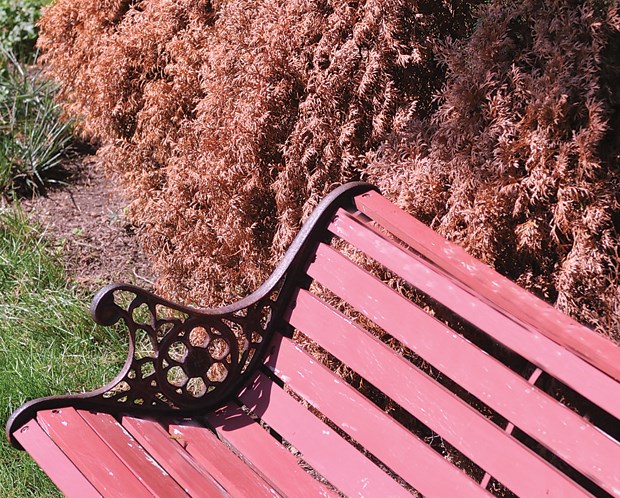October is not the end of the gardening season, it's the start of the fall planting season and considering how the summer drought has ravaged many gardens, replanting is definitely needed.
For those of you who are contemplating replacing drought-killed hedging cedars or replacing overgrown shrubs, here's my advice.
Is October a good time to plant something new in the garden?
Yes it is and here's why. Fall provides warm soil temperatures, cooler days and nights and some rainfall to settle in new plants. Beyond seasonality considerations, new plants add dynamism to existing gardens and change is inevitable in the garden so go with the flow of the season. Always remember to choose the right plant for the right location, not the plant you like in the wrong location. When choosing planting locations, place new plants wide enough apart to avoid crowding too soon in the time horizon of the garden's lifespan.
The hedge is dead.
The ubiquitous cedar hedge suffered widely this season with sections of hedges, individual plants and entire hedges dried to a crisp during the drought.
It's easy for me to see who properly prepared the soil for their hedge plantings and who did not.
Three main causes of drought-induced hedge death were noticeable. Firstly, the cedars were planted too close leaving little room for new foliage growth and root expansion.
Secondly, the soil preparation was not wide enough or deep enough to provide an adequate root growing environment. And thirdly, shearing the hedge too hard, and reducing or eliminating all new growth, also reduces root growth.
Replanting a dead cedar hedge should encompass the following techniques. To prevent replant disease, remove as much of the existing root system and debris from the soil before amending the soil. Incorporate organic matter in the form of compost, soil amender or animal manure into the planting area, to prevent replant disease and to provide nutrients and improved soil structure. Be generous when incorporating amendments.
Increase the soil volume with organic matter by at least one-quarter of the total volume of the planting bed.
Do not add bonemeal, root booster, starter fertilizer or any other additives. The organic amendments provide all of the nutrition needed and they will build structure, a claim that no chemical additive can make. Space the new hedge plants far enough apart so the root systems do not touch, to allow room for future growth.
Apply an eight centimetre depth of bark mulch or composted bark mulch over the entire planting bed after planting to protect new roots from climate stress. And water the new plants thoroughly after mulching.
One final note, if I were replacing a dead cedar hedge, I would replant with a new species of hedging such as yew, to reduce the possibility of replant disease.
The perennial bed needs renovation.
Perennial plants have the tendency to spread and enlarge over time leading to an imbalance in design proportion and an overgrown appearance.
Renovation of such beds can be effectively accomplished during fall when the soil is at its warmest temperature of the year, which leads to quick rooting of new plantings. It is important to incorporate organic matter during this renovation cycle because it may be several years before the opportunity for deep-soil enrichment occurs again.
First, dig all perennials needing resizing and place them in pots or burlap, and water them to avoid drought stress. Level off the bed after transplanting has occurred. Add at least 10 to 15 cm depth of compost, soil amender or manure on top of the bed. Dig deep when incorporating the amendment into the existing soil to afford future deep rooting. Try to break up the soil at the bottom of a shovel's depth and incorporate the amendment into that region. Next, regrade the amended bed and establish the new, finished soil contour. Place all of the potted perennials into a pleasing arrangement without crowding to allow for future growth. Some perennials may need division before replanting. Replant, then mulch the entire bed and water all transplants. I did not mention adding bonemeal or starter fertilizer because they are unnecessary in lieu of the organics recommended.
And lastly, let's not forget to plant some fall pets like pansies, wallflowers, ornamental kale/cabbage and chrysanthemums or asters in the garden.
Those plants provide continual colour rewards during our long grey winters. And most of them are easy to grow with little care.
For chrysanthemums try planting them in containers on the front porch or at least under the house's roof overhang to keep them dry, disease-free and looking cheerful during winter rainfall. Pansies and wallflowers will grow well in pots or out in the garden as mass plantings or border edgers.
Todd Major is a journeyman horticulturist, garden designer and builder, teacher and organic advocate. [email protected]



